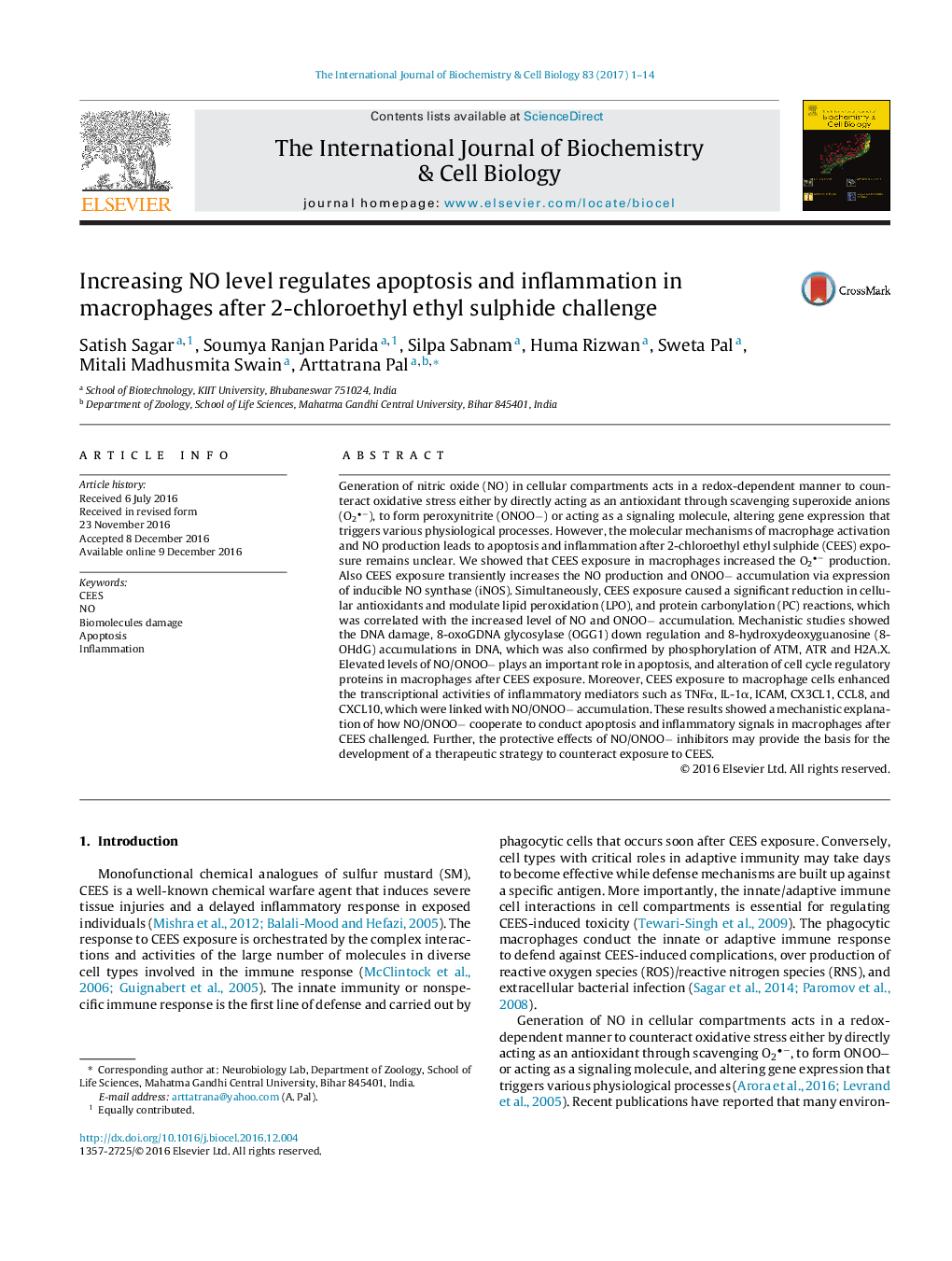| کد مقاله | کد نشریه | سال انتشار | مقاله انگلیسی | نسخه تمام متن |
|---|---|---|---|---|
| 5511409 | 1539859 | 2017 | 14 صفحه PDF | دانلود رایگان |

- Increasing NO level regulates antioxidants inactivation in macrophages after CEES challenge.
- Increasing NO level trigger DNA, protein and lipid damage in macrophages after CEES administration.
- Increasing NO level regulates apoptosis cascades in macrophages after CEES challenge.
- Increasing NO level activate cell cycle deregulation in macrophages after CEES challenge.
- Increasing NO level regulates macrophage inflammatory reactions after CEES challenge.
Generation of nitric oxide (NO) in cellular compartments acts in a redox-dependent manner to counteract oxidative stress either by directly acting as an antioxidant through scavenging superoxide anions (O2â), to form peroxynitrite (ONOOâ) or acting as a signaling molecule, altering gene expression that triggers various physiological processes. However, the molecular mechanisms of macrophage activation and NO production leads to apoptosis and inflammation after 2-chloroethyl ethyl sulphide (CEES) exposure remains unclear. We showed that CEES exposure in macrophages increased the O2â production. Also CEES exposure transiently increases the NO production and ONOOâ accumulation via expression of inducible NO synthase (iNOS). Simultaneously, CEES exposure caused a significant reduction in cellular antioxidants and modulate lipid peroxidation (LPO), and protein carbonylation (PC) reactions, which was correlated with the increased level of NO and ONOOâ accumulation. Mechanistic studies showed the DNA damage, 8-oxoGDNA glycosylase (OGG1) down regulation and 8-hydroxydeoxyguanosine (8-OHdG) accumulations in DNA, which was also confirmed by phosphorylation of ATM, ATR and H2A.X. Elevated levels of NO/ONOOâ plays an important role in apoptosis, and alteration of cell cycle regulatory proteins in macrophages after CEES exposure. Moreover, CEES exposure to macrophage cells enhanced the transcriptional activities of inflammatory mediators such as TNFα, IL-1α, ICAM, CX3CL1, CCL8, and CXCL10, which were linked with NO/ONOOâ accumulation. These results showed a mechanistic explanation of how NO/ONOOâ cooperate to conduct apoptosis and inflammatory signals in macrophages after CEES challenged. Further, the protective effects of NO/ONOOâ inhibitors may provide the basis for the development of a therapeutic strategy to counteract exposure to CEES.
Journal: The International Journal of Biochemistry & Cell Biology - Volume 83, February 2017, Pages 1-14